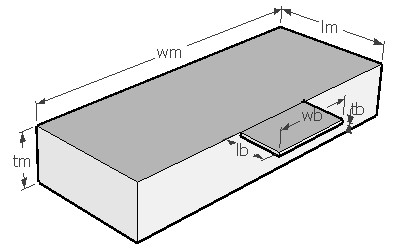
Notes
A mass suspended from a cantilever is used in MEMS devices for
sensing inertial signals like in accelerometers. This design
interface can be used to estimate the first harmonic frequency of
the system. The displacement is assumed to be perpendicular to the
plane of the cantilever. For mathematical modeling, the beam-mass
system is considered as a compound cantilever in a fixed-free
configuration. The limitation in this analysis is that the mass is
usually rigid and will not be subjected to bending as experienced
by the beam.
The plot shows the amplitude frequency relationship for the given beam-mass system. It shows the first resonance frequency as a sharp rise in amplitude. Using the cross hair tool, the resonant frequency and the corresponding relative amplitude can be obtained.